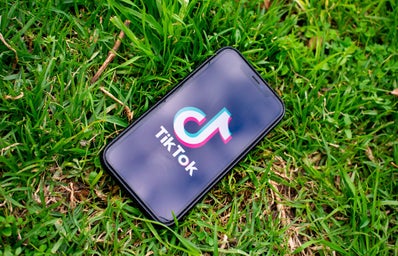On Friday, September 18, Donald Trump announced his decision to ban TikTok in the United States. The decision was not a surprise, as back in August he declared TikTok a national threat and a national emergency because “TikTok automatically captures vast swaths of information from its users… This data collection threatens to allow the Chinese Communist Party access to Americans’ personal and proprietary information.” In reality, the app doesn’t take any more of your information than Facebook does. TikTok’s data for the US is stored in the United States, with backup redundancy in Singapore—entirely outside of China.
So, what’s the real reason Trump is banning TikTok? He started talking about it back in July, just one month after TikTok users banded together to ruin Trump’s Tulsa rally. June 15th, he tweeted that over one million people had requested a seat at the rally in Tulsa, Oklahoma, though the venue holds only 19,000 seats. In the end, only 6,200 people ended up attending the rally, and TikTok users have proudly taken credit for ruining the attendance expectation. Users said they would post videos telling their followers how to request a free seat for the rally, leave the video up for 24-48 hours, then delete it to ensure the news never made it to the mainstream internet.
TikTok gained popularity as people began quarantining. In March alone, TikTok saw one million new users join. People who swore they would never download TikTok (myself included) found themselves downloading the app, desperate for entertainment. Before downloading the app, I assumed all of TikTok was cringey dance videos and thirst traps. Within a couple days of downloading it, I found myself on my first side of TikTok: POV TikTok. People use audio clips from shows, movies, and songs and act out a scene. From there, I found Alt TikTok, gay TikTok, Harry Styles TikTok, booktok, art TikTok—the list goes on. I never saw a single dance video; I never saw any sides of TikTok that I wouldn’t want to see. TikTok’s algorithm works similarly to Instagram’s, where recommended posts are tailored to your preferences. This makes TikTok a safe haven of sorts, because the people interacting with your posts are people who like those types of posts. Especially for gay TikTok, this has led to genuine self-expression without fear of judgement.
My for-you page is full of body positivity, mental health recovery journeys, and advice on how to help yourself out of dark mental spaces (I’ve discovered my new favorite method of self-soothing during a panic attack on the app). I also see a lot of adorable frogs, Harry Styles concert clips, and book recommendations. I see people experimenting with makeup, finding what makes them feel comfortable and confident. I see bisexual people validating themselves and others and proving that there is no singular experience for bisexual or otherwise queer people. I’ve expanded my artistic endeavors past embroidery, moving into painting and sketching (something I would have scoffed at the idea of just six months ago).

TikTok creates a space where people with similar interests all over the world can connect with each other. It’s a platform with plenty of inside jokes that anyone is free to join. It’s a space where, while we’re staying inside to keep ourselves safe, we can connect with other people we relate to that we otherwise never would have met. And because of how the algorithm works, you control what you see. I rarely ever see anything about politics on my for-you page because I wanted to make TikTok a place where I could take in only happy and good things. I take in enough politics and bad news on Twitter and Instagram and the rest of the internet, and while it’s important that we stay up-to-date and know about the horrors happening in our country and the rest of the world, humans can only take in so much of that bad news. For me, TikTok is the one corner of the internet where I can go and see content that makes me happy. It’s a nice little break I know I can always take when I need it. That’s been the case for a lot of users.
TikTok users are also generally kinder to other users compared to those of other platforms. When someone shares personal information, other users don’t find ways to mock them; instead, they find ways to support and encourage them. User Victoria Garrick (@victoriagarrick4) has created her platform based on being honest about her recovery from an eating disorder, being honest about mental illnesses, and normalizing all the rolls and jiggles that every human body has. Comments under her posts include: “I’ve been struggling with my ed for the past few days… but your encouragement helps,” “so inspiring to see you being so real and genuine! your content is so helpful and relatable, thank you for all that you do,” and “Finding you on here has been beyond helpful to me in a dark time. Thank you for your honesty & encouragement!” I haven’t seen a single negative comment on any of her videos. It’s all love and positivity for her and for everyone else interacting with her videos. It’s a community of people willing to be vulnerable online and share their mental health struggles and their complicated relationships with food. Especially during quarantine, when disordered eating and unhealthy relationships with food are a huge issue, people like Victoria can be a beacon of light.
TikTok can be a silly and fun platform, but it’s so much more than that. Last time I had a panic attack, I watched a TikTok video someone posted of a lake and pine trees while it was raining, and I watched the video over and over again and took deep breaths until I felt in control of my body again and could think of other, better self-soothing methods. This isn’t me trying to urge anyone to download TikTok, because if you’re not interested, that’s totally fine. What I’m saying is that TikTok is a lot more than dance videos and memes. In the time of coronavirus, it’s the place where 800 million people are finding community. It’s a place of vulnerability and kindness. There’s a space there for everyone, whether you want to laugh or connect with people with similar struggles. While many of us continue to self-quarantine, it’s a way to connect to other people in an honest and genuine way. Donald Trump’s decision to ban TikTok is a decision to ban community in a time where many of us are isolated and need it the most.



